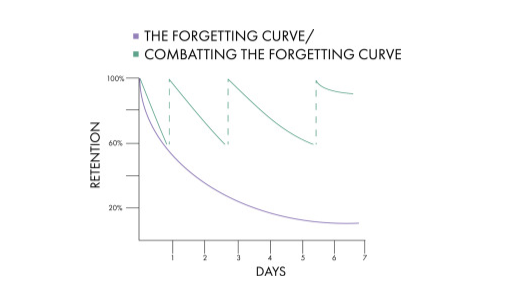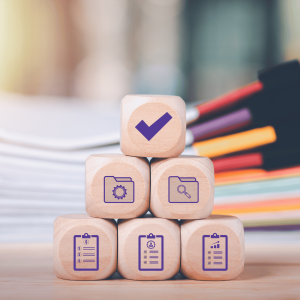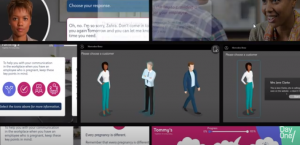Here we look at knowledge vs skills vs behaviours in the context of Learning and Development programmes. We consider the importance of each when it comes to training design and delivery, and how a Learning By Doing approach bridges the gaps to achieve real-life business benefits.

Knowledge vs Skills
Knowledge and skills, though closely related and often used interchangeably, are distinct concepts when it comes to training and development. Here’s a breakdown of the differences between them:
Definition:
- Knowledge: Refers to the theoretical understanding and information a person possesses. It’s what you know — facts, information, concepts, principles, and theories. For example, knowing the rules of a game, understanding a mathematical theorem, or being aware of a certain historical event.
- Skills: Refers to the practical ability to apply one’s knowledge in real-world situations or specific tasks. It’s what you can do — a learned power of doing something competently, often a method or a technique. For example, being able to play the game, solving mathematical problems, or critically analysing historical events.
Training Approach:
- Knowledge: Often acquired through reading, lectures, videos, or discussions. It’s more about transferring information.
- Skills: Acquired through practice, repetition, and hands-on experience. Skills-focused training often requires demonstration, simulation, and feedback.
Assessment:
- Knowledge: Can be evaluated through written tests, quizzes, and oral examinations where learners are asked about what they know.
- Skills: Are often assessed through practical tests, demonstrations, simulation metrics, or performance tasks where learners show what they can do.
Retention:
- Knowledge: New information might fade from memory over time if not regularly used, revised or acted upon.
Note the Ebbinghaus Forgetting Curve:

The additional lines show the potential influence of early training interventions in the way of revision, assessment or practical application of the new knowledge.
- Skills: Once developed to a proficient level, skills often remain with individuals for a longer time, especially if they are frequently used. However, they too can diminish if not practised.
Application:
- Knowledge: Provides a foundation or a basis for action. It’s essential for decision-making and problem-solving.
- Skills: Are necessary for the implementation of knowledge. Without the requisite skills, knowledge alone is often insufficient for effective task completion.
Examples:
- Knowledge: Knowing the principles of graphic design, understanding the rules of a language, or being familiar with software’s features.
- Skills: Creating a visually appealing poster using a design software, fluently speaking a language, or efficiently using software for a particular task.
When it comes to training, both knowledge and skills are of course essential. Training programmes should aim to provide learners with the necessary theoretical background (knowledge) while also ensuring that they gain hands-on experience and practice (skills) to effectively apply what they’ve learned.
Learning by doing in the way of simulation and scenario-based training enables the transfer of new knowledge into practical, real-life skills.
Skills vs Behaviours
Skills and behaviours are both integral aspects of workplace performance, but they serve different functions and are developed and assessed in distinct ways. Here’s a breakdown of the differences between them:
Definition:
- Skills: Skills refer to the learned ability to perform specific tasks or activities. They can be technical (related to a specific profession or job, like coding or machinery operation) or soft (like communication or teamwork). Skills determine what an employee is capable of doing.
- Behaviours: Behaviours refer to the actions, attitudes, and professional conduct of an individual in the workplace. They reflect an individual’s values, beliefs, motivations, and habits, and they determine how an employee goes about doing their job.
Origin:
- Skills: Are often acquired through education, training, and experience. They are developed over time and can be improved upon with practice and feedback.
- Behaviours: Stem from an individual’s personality, values, and past experiences. While behaviours can be influenced and changed, they often require deeper introspection, self-awareness, and sometimes interventions like coaching or mentoring.
Assessment:
- Skills: Can be assessed through tests, simulations, or practical demonstrations. You can, for instance, test someone’s ability to use a software tool or to write a sales pitch.
- Behaviours: Are typically assessed through observations, 360-degree feedback, or behavioural assessment tools. Examples include evaluations of an employee’s ability to handle stressful customer service calls, how they interact with colleagues, or their timeliness in meeting deadlines.
Examples:
- Skills: Programming in a specific language, creating financial reports, graphic design, effective public speaking, or project management.
- Behaviours: Demonstrating punctuality, showing resilience in the face of challenges, collaborating well with team members, or approaching tasks with a positive attitude.
Training and Development:
- Skills: Development often involves formal training sessions, courses, workshops, and on-the-job training.
- Behaviours: Development can be more complex and might involve peer-to-peer coaching, mentoring, feedback, self-reflection, or behavioural interventions during scenario-based training.
Relevance:
- Skills: Often job-specific and vary widely between professions. For instance, the skills required for using new software will differ significantly from those of a customer service rep.
- Behaviours: While some desired behaviours might vary by job, many core behaviours (like adaptability, teamwork, and calmness under pressure) are universally beneficial across different roles and industries.
In the workplace, while skills often determine the technical competency of an individual, behaviours shape the workplace culture, interpersonal dynamics, and overall work environment. Both are crucial for the holistic development and performance of an employee.
In summary
Employers tend to seek individuals who possess both the necessary knowledge and skills for a job, in order to predict whether or not their behaviours will align with the company’s values and culture.
Modern elearning solutions help L&D to identify knowledge and skill gaps and deliver realistic training scenarios that improve real-life workplace behaviours.
Training programmes with a focus on learning by doing help organisations to accelerate the processes of turning knowledge into practical skills, and through practice in a safe environment, gain the experience and confidence that lead to the behaviours needed for excellence.
Want to learn more about using Learning By Doing to vary your training approaches across knowledge vs skills vs behaviours? Contact us at Day One to discuss how we can help you to with immersive learning solutions that impact real-life workplace behaviours and business performance.


















